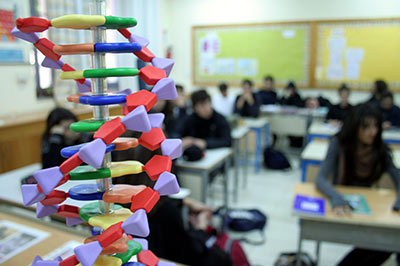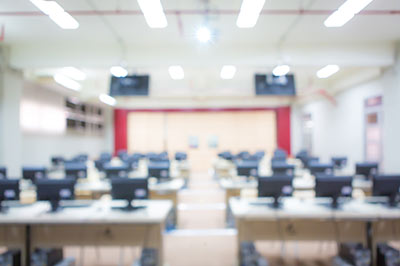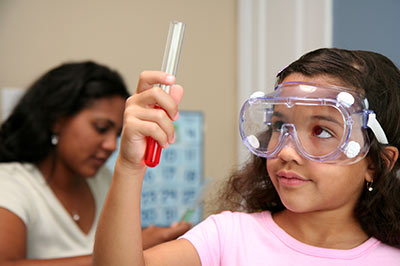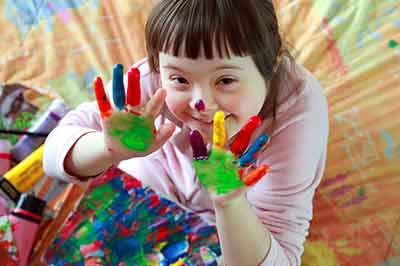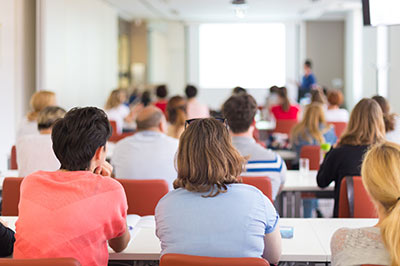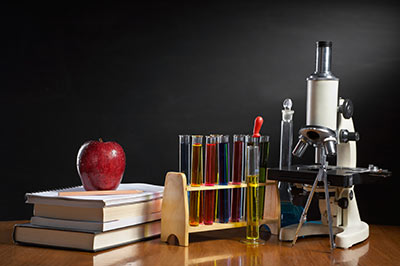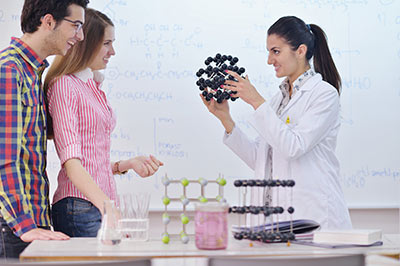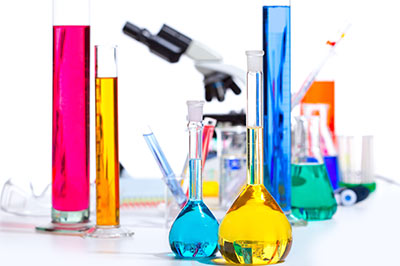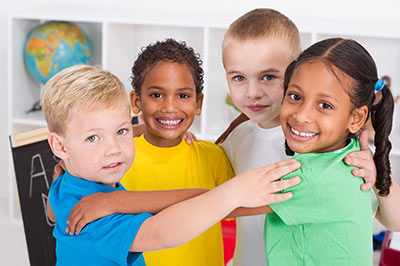By Angel Ford.
I remember high school biology vividly. I remember that it smelled funny and at times I was grossed out by the displays—some in pictures and some in jars. I recall hands-on activities, such as fermenting cabbage to create sauerkraut and then putting it on pizza, and dissecting small animals—thankfully not while eating pizza. I didn’t pursue any area of life science after high school; in fact, I avoided those types of careers because they didn’t fit my personality or interests. However, I did learn a great deal from my lab experiences. Understanding cardiac reports and understanding why certain plants live or die while in my less-than-expert care are just a couple of priceless gems from the biology lab.
Even though there were many benefits in the biology lab, my experiences in the physics lab at that same high school had a significant impact on my future. The physics curriculum seemed beyond challenging, yet the atmosphere, equipment, and experiences piqued my interest. I remember being engaged by my teacher’s excitement and desire for us to learn. The class was furnished with a variety of resources and plenty of room to move around.
I believe the instruction and hands-on experiments in that lab equipped me to become an electro-environmental technician in the Air Force. High school physics helped prepare me to fix billion dollar airplanes with engaging lessons in foundational electrical and mechanical concepts. These same experiences helped me fix my car, other electrical items around my house, and even helped me diagnose a generator in a small village in Mozambique. I’m thankful for the opportunities that I had in science labs because of passionate teachers and the facilities and resources available to enhance their lessons.
Had my experiences in those labs—specifically the physics lab—been different, my life path may have been altered. Had my science classes been held in regular classrooms that restricted those teachers’ methods of instruction, I may not have absorbed as readily, and later been able to apply concepts from physics. I am not an anomaly here. Many people certainly learn more from creating electrical circuits than merely studying schematics and memorizing facts. Many could grasp how to ferment veggies better if they too had the opportunity to taste their own sauerkraut. I’m not against either studying textbooks or memorization; however, I am suggesting that one learns more through hands-on laboratory experiences when these teaching methods are part of the curriculum.
Concerns about students’ achievement of science in our nation are increasing. These anxieties are based on many factors, one of which is the low test scores of students. In 2011, 35 percent of 8th grade students in America tested below the basic level in science (NCES, 2012). In 2010 the President’s Council of Advisors on Science and Technology (2010) emphasized the importance of increasing science performance. This report suggested that this goal could, at least in part, be met by aiding in the formation of strong science identities (how students see themselves in relation to science), and increasing the science motivation and self-efficacy of students.
Interestingly enough studies have demonstrated that the school buildings/classrooms affect teaching and learning (Earthman & Lemasters, 2011). Research also supports the idea that students who engage in active learning, such as hands-on projects and group science projects are prone to score higher on science achievement tests (NCES, 2012), and tend to have an increase in their enjoyment of science (Gilmore, 2013). How many of the students in our nation are in science classrooms that are not optimally constructed for such learning?
Classrooms are not the only factor to consider when looking at increasing science interest, motivation, or achievement. Could it be, however, that by improving the learning environment and providing students and teachers access to appropriately designed and adaptable science labs, that improvements would also occur?
Printable Blog
References
Earthman, G. I., & Lemasters, L. K. (2011). The influence of school building conditions on students and teachers: A theory-based research program (1993-2011). The ACEF Journal, 1(1), 15-36.
Gilmore, M. (2013). Improvement of STEM education: Experiential learning is the key. Mod. Chem. Appl, 1, e109.
National Center for Education Statistics (NCES), (2012). Science 2011: National Assessment of Educational Progress at Grade 8. U. S. Department of Education.
President’s Council of Advisors on Science and Technology. (2010). (Executive Summary) REPORT TO THE PRESIDENT Prepare and Inspire: K-12 Education in Science, Technology, Engineering, and Math (STEM) for America’s Future. Retrieved March 19, 2015 http://www.whitehouse.gov/sites/default/files/microsites/ostp/pcast-stemed-execsum.pdf

